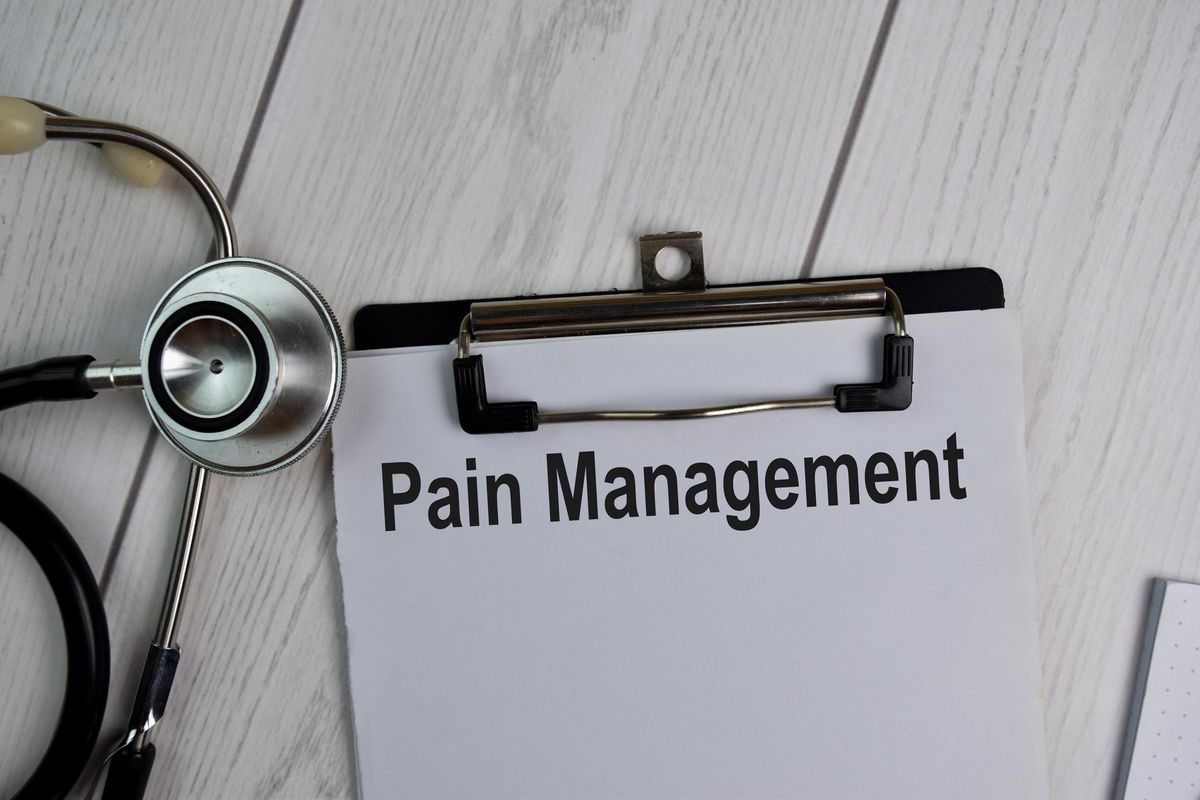Dipal Shah had an emergency delivery for her baby. She was put under anesthesia during the complex procedure and awoke in tremendous pain. "I kept pushing the morphine push button. The nurse had to stop me," the 45-year-old recalled. "They wanted me to take opioids, but after the first day, I was throwing up and nauseated immediately. I couldn't function." Shah then switched to ibuprofen, which she used throughout her 12-week recovery.
Many doctors are quick to give women like Shah opioids post-surgery, especially after procedures like a caesarean section, the most common surgery performed in the United States, or a hysterectomy. Some studies suggest women experience more pain post-surgery than men. And, according to Theresa Mallick-Searle, an adult nurse practitioner with the Stanford Outpatient Medical Center, Division of Pain Medicine, this leads to women often leaving hospitals with opioid prescriptions. But there are some potential issues with this class of drugs.
Opioid versus non-opioid pain management
An opioid is a drug prescribed to treat pain. It reacts on the opioid receptors, which Caitlin E. Martin, director of OB-GYN services at Virginia Commonwealth University, describes as "the receptors that are within your nervous system." These drugs change how your body experiences pain. Common opioids include oxycodone, hydrocodone and morphine.
Non-opioid pain medications don't bind to the opioid receptor and can also be effective in controlling pain. Examples of non-opioids used after surgery include ibuprofen, acetaminophen, acetylsalicylic acid and long-acting numbing medications.
Opioids can come with side effects and risks, including addiction
Opioids, if not managed correctly, can become a pathway to dependence and addiction for women. "It's important to know that anytime that you are exposed to opioids, you could be putting yourself at risk of developing a persistent use of that medication or of that drug," said Martin.
Females are 48% more likely to use prescription drugs that have the potential for misuse or abuse than males. "Women are more likely to be prescribed opioids for pain for longer periods and in higher doses than men — between 1999 and 2010, overdose deaths related to opioids increased more than 400% among women, compared to an increase of 265% among men," says Mallick-Searle.
And women, according to Dr. Mishka Terplan, medical director for the Friends Research Institute, can overdose at a lower dose of opioids than men. Doctors don't know why this is, but Terplan believes it's due to women being more likely to be prescribed other medications at the same time as opioids, such as psychiatric medications, which increases overdose risk.
Even short-term, opioids can have unwanted effects. A combination of oxycodone and acetaminophen, which is commonly prescribed after a C-section, can cause drowsiness, confusion, breathing problems, skin blistering, trouble passing urine and symptoms of liver injury.
Side effects, like drowsiness, can also extend to a baby through breastfeeding. And persistent opioid usage can have much more dangerous effects. "The risk of 'neonatal opioid withdrawal syndrome' [when a newborn experiences withdrawal from opioids as a result of the mother using opioids while pregnant] has been widely documented and discussed," Mallick-Searle said.
Opioid alternatives
After surgeries such as C-sections, Martin and her colleagues, like Terplan, try to use a plan that involves a combination of pain control options. "So we're not just going to give you one medication; we're going to give you different medications, maybe on different schedules," Martin explained. In addition to medications, treatments may include ice packs, leaving a pain-relieving epidural in the body longer after surgery or a pain patch. And some women are offered ibuprofen, acetaminophen or a long-acting numbing medication to provide pain relief.
Hospitals are also starting to use enhanced recovery after surgery (ERAS) techniques, which are a set of standards used by a team that is made of many different types of specialists. These standards happen before, during and after surgery to help make recovery easier. Some components of ERAS include pre-surgical counseling, as well as optimizing fluid and caloric intake and hemoglobin levels before your procedure. Post-surgery, it involves tactics such as delaying umbilical cord clamping and getting people up and moving soon after surgery to help them move their bowels (poop) for further pain relief. One of the most important parts of ERAS is pain management.
The bottom line, said Martin, is that "every person who is undergoing a surgery should definitely talk to their provider and make a pain management plan ahead of time." Terplan agrees and said even while doing pregnancy visits with your doctor (because C-sections can be unplanned), it's important to discuss the types of pain medication you may be getting after surgery and the options available, including opioid alternatives. "People should understand the risks, benefits and indications of any medication," he said.
Terplan suggests asking the following questions: "Does your hospital have an opioid prescribing policy? What is it? Are there non-opioid options for pain? Does your hospital have an ERAS pathway for either gynecological surgery or obstetrics?"
Taking an active approach to your recovery
One-third of women deliver via C-section and may be prescribed opioids. While other effective treatment options exist, it's important to discuss what's best for your recovery with your doctor and follow your mutually agreed-on plan. Martin explained that opioids, when used correctly and short-term, can be an effective pain control. "It is okay to use opioids if you need them," she explained, noting that she has taken them herself after surgery. But she also adds, "If you don't need them, don't take them."
At the end of the day, make sure to advocate for yourself. "Your health is very important, especially for women who are having a baby and C-section, as you can't take care of someone else unless you take care of yourself first," Martin said. "I say that literally every day to my patients, because women have a tendency to put other people's needs first."
This resource has been created with support from Pacira BioSciences, Inc.
- Breast Surgery and Opioids: What You Need to Know ›
- Why You Need to Advocate for Yourself and Create a Pain Management Treatment Plan Before Surgery ›
- Designing Less Addictive Opioids, Through Chemistry ›
- When It Comes to Managing Pain after Surgery, Women Want a Choice ›
- There Are Alternatives to Opioids for Pain After Surgery ›
- Fast Facts: Alternatives to Opioids for Pain Management After Common Surgeries for Women - HealthyWomen ›







